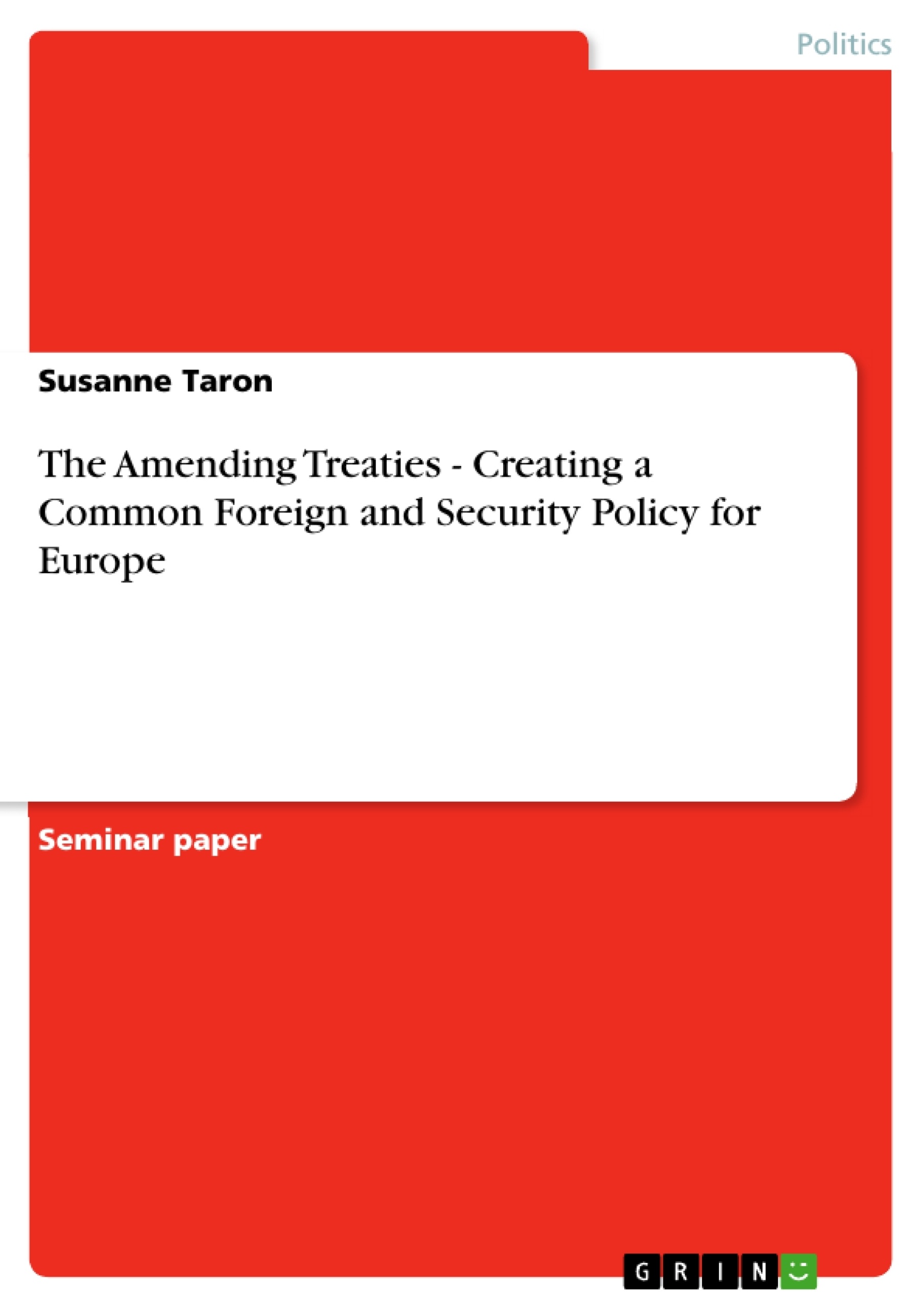The European Union today represents undeniably one of the most unusual yet comprehensible political actors in the in the international system. Since the early wake of the 1950s, its capacity has gradually expanded to encompass foreign policy initiatives, ranging from a vast array of foreign policy tools including economic, diplomatic, and now to a very limited extent military operations related to peacekeeping and peace enforcement. This capacity, however, was neither included in the original Treaty of Rome, nor was it predicted by the many observers of European integration. Indeed, when the Treaty establishing the European Economic Community (EEC) was first signed in 1957, the predominant political philosophy held at the time was driven by the deduction that European market integration would bring untrammelled economic growth and prosperity to the region, and that consequently armed conflict which had evidently plagued the European continent for over half a century prior to the conclusion of the Second World War, would become an event of the past. Certainly at this time, no mention was given to the fact that European economic strength should and would translate over into greater foreign policy influence in the international system. While admittedly there were attempts to create a European foreign policy involving the member states of the European Community (EC) which had predated the EEC under the Treaty of Rome, namely the Gasperi initiative of 1952. 1 Such attempts would accompany the ill-fated endeavour to create a European Defence Community under the original six members of the ECSC which had blatantly floundered. Indeed, member states of the EC would have to wait until the 1970s before they could engage in a process of foreign policy cooperation under the European Political Cooperation (EPC) of 1970, in of which, would subsequently become legalized under the Single European Act of 1987. New threats and new requirements concomitant to the rapid geopolitical changes that had transpired from post-Cold War disarticulation would ultimately abet the EPC to elapse under the ratification of the Maastricht Treaty (TEU). Entering into force on November 1, 1993, the TEU provided the EU with new and enhanced competencies, one of which would be the Common Foreign and Security Policy (CFSP) which would be representative of the second intergovernmental pillar of the EU's architecture. [...]
Inhaltsverzeichnis (Table of Contents)
- Introduction.
- The legalization of European foreign policy.
- From the emergence of the EPC to the SEA: European foreign policy as a legal regime
- Evolution of European Political Cooperation
- The Single European Act
- The Treaty of Maastricht and the establishment of CFSP
- The Amsterdam Treaty and reform of CFSP
- CFSP provisions under the Treaty of Nice
- The possibility of future CFSP reform: the Constitutional Treaty.
- Conclusion.
Zielsetzung und Themenschwerpunkte (Objectives and Key Themes)
This paper aims to examine the evolution of European foreign policy through a series of amendments to the European Union's founding treaties. The paper will trace the development of this policy area from its early beginnings in the 1970s to the present-day Common Foreign and Security Policy (CFSP). It will focus on the key milestones in this development, particularly the legalisation of European foreign policy, the creation of the CFSP, and the subsequent reforms made to the policy area under the amending treaties.
- The legalisation of European foreign policy
- The evolution of European foreign policy from the European Political Cooperation (EPC) to the CFSP
- The role of the amending treaties in shaping European foreign policy
- The challenges and opportunities for European foreign policy in the 21st century
Zusammenfassung der Kapitel (Chapter Summaries)
- Introduction: This chapter provides a brief overview of the European Union's foreign policy and how it has evolved since the 1950s. It explores the historical context of European integration and the emergence of the CFSP as a core element of the EU's institutional architecture.
- The legalization of European foreign policy: This chapter examines the process by which European foreign policy has been gradually legalised over the past few decades. It looks at how the EU has developed a set of legal instruments and institutions to support its foreign policy ambitions.
- From the emergence of the EPC to the SEA: European foreign policy as a legal regime: This chapter explores the early stages of European foreign policy cooperation, including the European Political Cooperation (EPC) and the Single European Act (SEA). It highlights the key milestones and challenges associated with this period of development.
- The Treaty of Maastricht and the establishment of CFSP: This chapter examines the establishment of the Common Foreign and Security Policy (CFSP) under the Treaty of Maastricht. It analyzes the key objectives and principles of the CFSP and its role in shaping the EU's foreign policy agenda.
- The Amsterdam Treaty and reform of CFSP: This chapter explores the reforms made to the CFSP under the Amsterdam Treaty. It examines the changes to the institutional framework and the mechanisms for decision-making in the foreign policy area.
- CFSP provisions under the Treaty of Nice: This chapter examines the further developments in the CFSP under the Treaty of Nice. It discusses the changes made to the voting procedures and the establishment of new institutions to support the CFSP.
- The possibility of future CFSP reform: the Constitutional Treaty: This chapter explores the potential for future reform of the CFSP, particularly in light of the proposed Constitutional Treaty. It examines the key issues that are likely to shape the future development of European foreign policy.
Schlüsselwörter (Keywords)
The main keywords and focus topics of this paper include: European Union, foreign policy, Common Foreign and Security Policy (CFSP), European Political Cooperation (EPC), Single European Act (SEA), Treaty of Maastricht, Treaty of Amsterdam, Treaty of Nice, Constitutional Treaty, legalisation, institutional reform, international relations, European integration, and geopolitical change.
- Quote paper
- Susanne Taron (Author), 2006, The Amending Treaties - Creating a Common Foreign and Security Policy for Europe, Munich, GRIN Verlag, https://www.grin.com/document/64595




